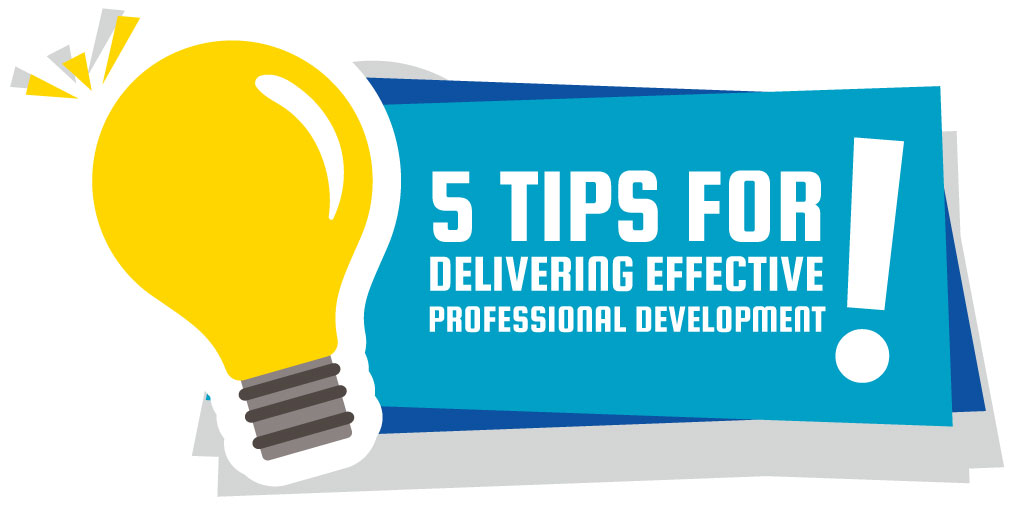 Teachers Make the Worst Students!
Teachers Make the Worst Students!
Teachers say it themselves all the time: Teachers can make the worst students. While we know there are no bad students, we do agree that professional development needs to be truly excellent to make an impact. From the thousands of PD sessions we have delivered, we’ve learned there are five key insights that may help you develop and deliver more effective PD—especially when technology is part of the mix.
Time: Anyone who has tried to set a meeting (or series of meetings) with a group of teachers during the school year will tell you that this task can be nearly impossible. Between lesson planning, grading, testing, tutorials, sponsoring student groups, and (oh yeah!) teaching, time is a teacher’s most precious resource. Asking a teacher to then also attend a training session before or after school, at lunch, or during a planning period can be irksome.
As trainers, we approach the over-scheduled teacher on their time through microlearning and shoulder-to-shoulder visits. Breaking sessions down into bite-sized pieces can not only make the content more digestible, but also provide more flexibility when it comes to scheduling. In the life of a teacher, a 30-minute training session can be a lot easier to fit into a schedule than a full hour. Shoulder-to-shoulder sessions also allow trainers to work around a teacher’s schedule with a personalized session in the classroom, with or without students. Shorter, more frequent sessions are the most impactful!
Technophobia: Adopting a new instructional tool or practice can be daunting for any teacher, so adding technology can create additional barriers—even when it will eventually save time and improve outcomes. Teachers are skeptical about needing to adjust their entire teaching practice, resistant to remake all of their content to fit new technology, and may even be worried that they will break the tech.
Being aware of, accepting, and knowing how to work effectively with even the most technophobic teacher is absolutely essential. Breaking into a teacher’s comfort zone by creating trust is possible when trainers don’t make assumptions about their audience’s prior knowledge. No one likes to admit when they’re overwhelmed, so trainers can adjust the pacing of their sessions and focus on training the teachers, not simply presenting content.
Attitude: Some teachers come to professional development sessions with a slew of questions, but most of them boil down to this: What's in it for me?
Overcoming negative perceptions comes with creating teacher buy-in and building relationships. Teachers need to know that the information they are receiving is accurate, from a credible source, presented with objectivity, and that you will not share confidential information, pass judgement, or waste their valuable time. In the opening statement of any training session with teachers, the trainer should clearly state the expected outcomes of the session. This helps the participants to be aware of what content will be covered and decide if it aligns with their desired outcomes. Acknowledging their doubts and addressing why they should engage in the session will help to earn their loyalty—and respect along with it.
Lack of Engagement: We’ve all seen it during trainings—one teacher surreptitiously grades papers while another checks email. They may be in the room, but they are not present and will not benefit fully from the training. This off-task behavior ultimately leads to teachers not gaining anything from the session.
Most teachers will tell you the best PD sessions they’ve been to were the ones where they took something tangible from the training and used it the next day. Preparing meaningful and relevant examples helps teachers see the immediacy of the application. In addition, incorporating structured work time into the session facilitates teacher engagement by allowing them to apply the new skill with their own materials.
Infrastructure: No two schools are the same. This truth extends to what technology is (or is not) available, as well as what issues will arise during a lesson. Some teachers are resistant to try any new technology with their students due to a lack of confidence in their school’s technology resources.
As trainers, we also face the reality that technology doesn’t work perfectly 100% of the time. We have found that teachers find it reaffirming when trainers face similar issues. In fact, we use these technological snafus as an opportunity to model the best practices of having troubleshooting steps prepared and having a Plan B ready to go.
Please comment below to share some of your insights into how PD has been successful at your school.
 Want to learn how to bring customizable PD to your schools and teachers? Check out Boxlight’s newest subsidiary, EOS Education, providing a rich portfolio of classroom training, professional development, and educator certification services.
Want to learn how to bring customizable PD to your schools and teachers? Check out Boxlight’s newest subsidiary, EOS Education, providing a rich portfolio of classroom training, professional development, and educator certification services.
This blog was written in conjunction with:
 Kaela Klein, Teacher Learning Consultant, Boxlight and EOS Education
Kaela Klein, Teacher Learning Consultant, Boxlight and EOS Education
Kaela comes to Boxlight and EOS with six years of classroom experience. She got her start in teaching through Teach For America as part of the Houston corps. She specializes in secondary ELA and has a Bachelor’s degree in English from Duke University. Her passion for technology developed while in the classroom. At her last school, she served her campus as a data software representative and technology assistant for her department.





